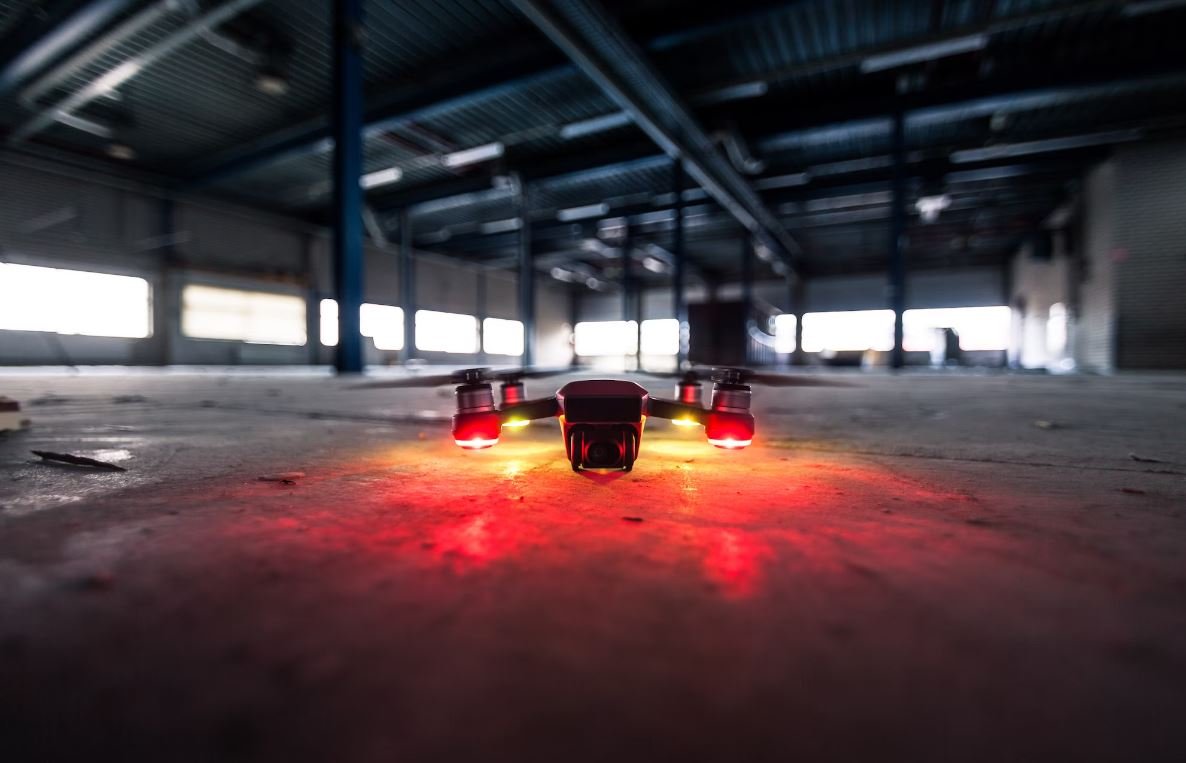Deepfake GAN
Deepfake GAN, or Generative Adversarial Network, is a technology that uses artificial intelligence algorithms to create realistic fake images, videos, or audio recordings. It has gained significant attention and raised concerns regarding its potential misuse.
Key Takeaways:
- Deepfake GAN utilizes AI algorithms to generate convincing fake media.
- It can be used to create realistic fake images, videos, and audio recordings.
- Deepfake technology raises ethical concerns and potential for misuse.
- Advancements in AI continue to improve the quality of deepfakes.
**Deepfake GAN** technology operates by training two neural network models: the **generator** and the **discriminator**. The generator creates fake media, while the discriminator tries to identify whether the media is real or fake. This process results in a constant back-and-forth competition, leading to the creation of increasingly realistic deepfakes.
*Deepfake GAN technology has become increasingly sophisticated, allowing for the creation of highly realistic fake media that can be difficult to differentiate from genuine content.*
How Deepfake GAN Works:
- The generator network inputs random noise and generates fake media based on the given parameters.
- The discriminator network receives both real and fake media and tries to classify them correctly.
Through multiple training iterations, the **generator** continually refines its output to make it more convincing, while the **discriminator** improves its ability to detect fakes. This adversarial process leads to the development of deepfakes that are increasingly difficult to identify.
Applications and Concerns:
Deepfake GAN technology has both positive and negative implications:
- **Positive applications**:
- Entertainment industry: Deepfakes can be used in movies and TV shows to recreate the appearances of actors or to bring historical figures to life.
- Research: Deepfake GAN can assist in medical research, training simulations, and computer graphics.
- **Negative implications**:
- Misinformation and fake news: Deepfakes can be used to create misleading or false information.
- Exploitation and fraud: Deepfake GAN can be utilized for malicious purposes, such as creating fake identities or compromising individuals’ privacy.
Advancements in AI and Deepfakes:
With continued advancements in artificial intelligence, deepfake GAN technology has been continuously improving:
| Advancement | Description |
|---|---|
| Improved visual quality | New techniques in deepfake GAN have resulted in visually more realistic deepfakes. |
| Audio deepfakes | Deepfake GAN algorithms have also been applied to create realistic audio for voice cloning and synthesis. |
*As AI advances, deepfake GAN technology will likely continue to evolve, raising concerns about the potential consequences of highly convincing fakes.*
Regulating Deepfake GAN:
Given the potential harm and misuse of deepfake technology, there is a need for regulations and countermeasures:
- Legal frameworks: Establishing laws to govern the creation and dissemination of deepfakes.
- Detection algorithms: Developing sophisticated tools to detect and verify the authenticity of media.
- Educational awareness: Educating the public about deepfakes and encouraging critical thinking when consuming media.
Public Awareness and Responsible Use:
As society grapples with the challenges posed by deepfake GAN technology, it is crucial to raise awareness and encourage responsible use:
- Media literacy: Promoting media literacy and teaching individuals to be cautious of the trustworthiness of information.
- Technological advancements: Investing in research to develop robust detection methods and technologies to combat deepfakes.
- Ethical considerations: Encouraging ethical use of AI and responsible technological development.
*As we move forward, it is essential to stay vigilant and actively address the potential risks and consequences associated with deepfake GAN.*

Common Misconceptions
Misconception 1: Deepfake videos are always created with malicious intent
One common misconception about deepfake videos is that they are always created with malicious intent. While it is true that deepfake technology can be misused for spreading misinformation or fake news, not all deepfake videos are harmful or intended to deceive. There are instances where deepfakes are created for entertainment purposes, such as in movies or digital art installations.
- Deepfakes can be used as a tool for creative expression in art and media.
- Some deepfake videos are designed to raise awareness about particular societal issues.
- Deepfake technology can be used in positive ways, such as improving visual effects in movies.
Misconception 2: Deepfake videos are always easy to detect
Another common misconception is that deepfake videos are always easy to detect. While advances in deepfake detection techniques are being made, it is still challenging to identify these videos with certainty. Deepfake algorithms are continuously evolving, becoming more sophisticated and difficult to distinguish from genuine videos, especially to the untrained eye.
- Deepfake videos can be highly convincing, making them difficult to spot with just visual analysis.
- New techniques, such as using deep learning algorithms, make it harder to detect deepfakes.
- Deepfake detection often requires specialized software or expert knowledge.
Misconception 3: Deepfake technology can only create videos
Many people have the misconception that deepfake technology is limited to creating fake videos. However, deepfake technology can also be applied to other media formats, such as images, audio, and text. By leveraging generative adversarial networks (GANs), deepfakes can be generated and manipulated in various forms.
- Deepfake technology can be used to create fake images or alter existing ones.
- Audio deepfakes can imitate a person’s voice or create entirely new audio clips.
- Text-based deepfakes can mimic an individual’s writing style or generate fake content.
Misconception 4: Deepfake technology is only accessible to tech-savvy individuals
Many people believe that creating deepfakes requires advanced technical skills and is only accessible to tech-savvy individuals. While some deepfake creation methods do require technical expertise, there are also user-friendly deepfake apps and software tools available that enable anyone to create deepfake videos without much knowledge or experience.
- Several deepfake mobile apps allow users to create deepfakes using pre-trained models.
- Online platforms provide user-friendly interfaces for generating deepfake videos.
- Tutorials and resources are available to help beginners create deepfakes.
Misconception 5: Deepfake technology will always be a threat to society
Deepfakes are often associated with negative implications and considered a long-term threat to society. However, it is crucial to recognize that the same technology used for developing deepfakes can also be used to detect and combat them effectively. The ongoing research and development of deepfake detection tools and legislation aimed at addressing deepfake-related issues are indicators of the commitment to mitigating the potential threats.
- Efforts are being made to develop effective deepfake detection algorithms and methods.
- Governments are working on legislation to regulate deepfake usage and combat misinformation.
- Collaborative initiatives involve tech companies, researchers, and policymakers to tackle deepfake challenges.

The Rise of Deepfake Technology
In recent years, deepfake technology has rapidly gained popularity and raised concerns among experts in various fields. Deepfakes are highly convincing synthetic media in which a person’s face or voice is seamlessly replaced by someone else’s through the use of artificial intelligence algorithms, particularly generative adversarial networks (GANs). This article examines different aspects and implications of deepfake technology through a series of captivating tables.
The Impact of Deepfake Videos
Deepfake videos have become a significant concern due to their potential to spread misinformation and deceive viewers. The following table highlights the impact of such videos:
| Effects | Explanation |
|---|---|
| Political Manipulation | Deepfakes can be used to create fake videos of politicians, leading to manipulation of public opinion. |
| Reputation Damage | People can be falsely portrayed in compromising or illegal activities, tarnishing their reputation. |
| Identity Theft | Criminals can use deepfakes to deceive or impersonate individuals, leading to potential fraud or harm. |
Applications of Deepfake Technology
While deepfake technology poses significant risks, it also finds applications in various domains, including entertainment and research. The following table showcases some intriguing use cases:
| Domain | Applications |
|---|---|
| Entertainment | Deepfakes enable realistic face swapping in movies, creating memorable and visually stunning scenes. |
| Historical Reenactment | Researchers can use deepfake technology to create lifelike representations of historical figures. |
| Language Learning | Deepfake voices can be employed to help learners practice speaking different languages. |
Deepfake Detection Techniques
Considering the potential risks associated with deepfake content, researchers have developed detection methods to identify manipulated media. The table below illustrates various techniques:
| Technique | Description |
|---|---|
| Face Geometry Analysis | Examining and comparing facial geometries to identify anomalies or inconsistencies. |
| Temporal Analysis | Assessing the consistency of facial movement and gestures over time. |
| Artificial Intelligence Algorithms | Using machine learning algorithms to analyze patterns and identify manipulations. |
The Ethical Implications of Deepfakes
Deepfake technology raises crucial ethical concerns that require careful deliberation. The following table presents some major ethical implications:
| Ethical Concern | Description |
|---|---|
| Privacy Invasion | Creating deepfakes can violate individuals’ privacy by misusing personal data. |
| Consent and Consent Forgery | Deepfakes can be used to create explicit content, raising issues of consent and forgery. |
| Legal and Financial Repercussions | Deepfake content can lead to legal disputes and financial losses for individuals or organizations. |
Deepfake Regulation Efforts
As the risks associated with deepfakes have become apparent, considerable efforts have been made to regulate the technology. The table below highlights some key regulatory measures:
| Regulatory Approach | Explanation |
|---|---|
| Legislation and Policies | Governments have started implementing laws and policies to combat the misuse of deepfakes. |
| Educational Campaigns | Raising awareness among the public regarding the dangers of deepfakes and how to identify them. |
| Collaboration with Tech Companies | Governments are working with technology companies to develop detection tools and countermeasures. |
Future Advancements in Deepfake Technology
As research and development in deepfake technology continue to progress, remarkable advancements are anticipated. The following table presents some potential future developments:
| Advancement | Description |
|---|---|
| Voice Cloning | Enhancing deepfake algorithms to clone and mimic voices with even greater accuracy. |
| Real-Time Deepfakes | Enabling the creation and manipulation of deepfakes in real-time, leading to live deepfake applications. |
| Deepfake Detection AI | Developing advanced artificial intelligence systems that can more accurately detect deepfake content. |
The Need for Public Awareness
Given the potential risks, ethical concerns, and regulatory measures surrounding deepfake technology, public awareness is crucial. Understanding the impact and the countermeasures against deepfakes can empower individuals to navigate this emerging technology safely while fostering a responsible and informed society.
Deepfake technology, with its capacity to blur reality, has brought both excitement and worries. While the tables above highlight the positive applications and regulatory efforts, the negative consequences and ethical implications remain apparent. As society moves forward, the challenge lies in striking a balance between the advantages of deepfake technology and safeguarding against its malicious usage. By continuing to explore advancements, promoting awareness, and advocating for responsible use, we can hope to mitigate the dangers associated with deepfakes and foster a trustworthy media environment.
Frequently Asked Questions
What is Deepfake GAN?
A Deepfake GAN, which stands for Deepfake Generative Adversarial Network, is an artificial intelligence-based technique used to create highly realistic and often deceptive fake multimedia content, such as images, videos, or audios.
How does Deepfake GAN work?
Deepfake GANs utilize a two-step process. First, a generator network is trained on a large dataset of real content to create fake content. Then, a discriminator network is trained to distinguish between real and fake content. These networks compete against each other in a bid to generate the most convincing deepfakes.
What are the main concerns associated with Deepfake GAN?
Deepfake GANs have raised various concerns due to the potential misuse of the technology. These concerns include disinformation campaigns, privacy violations, impersonation fraud, and the erosion of trust in audiovisual media.
What are some potential applications of Deepfake GAN?
While there are potential malicious applications, Deepfake GANs also have positive uses. Some potential applications include entertainment industry (such as creating digital doubles for actors), video game development, virtual reality, and rehabilitation therapy.
How can Deepfake GANs be detected?
Detecting deepfakes can be challenging due to their high-level realism. However, various detection techniques have been developed, including analyzing facial artifacts, examining inconsistencies in lighting and shadow, and using machine learning algorithms to detect subtle anomalies in the manipulated content.
What measures can be taken to combat the negative impact of Deepfake GANs?
Combating the negative impact of Deepfake GANs requires a multi-faceted approach. This includes strengthening legislation around deepfakes, developing advanced detection tools, educating the public about the risks, promoting media literacy, and implementing strict guidelines for verifying the authenticity of multimedia content.
Can Deepfake GANs be used for good purposes?
Yes, Deepfake GANs can have positive applications such as in the entertainment industry, video game development, and virtual reality. They can also be utilized for educational purposes, research, and artistic expressions.
Are there any legal implications associated with Deepfake GANs?
Deepfake GANs raise several legal concerns, including issues related to privacy, defamation, intellectual property rights, and the creation of counterfeit materials. Legislation around deepfakes is still evolving to address these challenges.
What should individuals do to protect themselves from deepfake content?
To protect themselves from harmful deepfake content, individuals should be cautious when consuming media, verify the authenticity of content from trusted sources, be skeptical of suspicious or out-of-context information, and stay informed about the latest developments in deepfake technology.
What is the future outlook for Deepfake GAN technology?
The future of Deepfake GAN technology is uncertain. As it continues to evolve, the risks and challenges associated with deepfakes are likely to increase. However, advancements in detection techniques and ethical use of the technology can help mitigate potential harms and promote responsible application.




